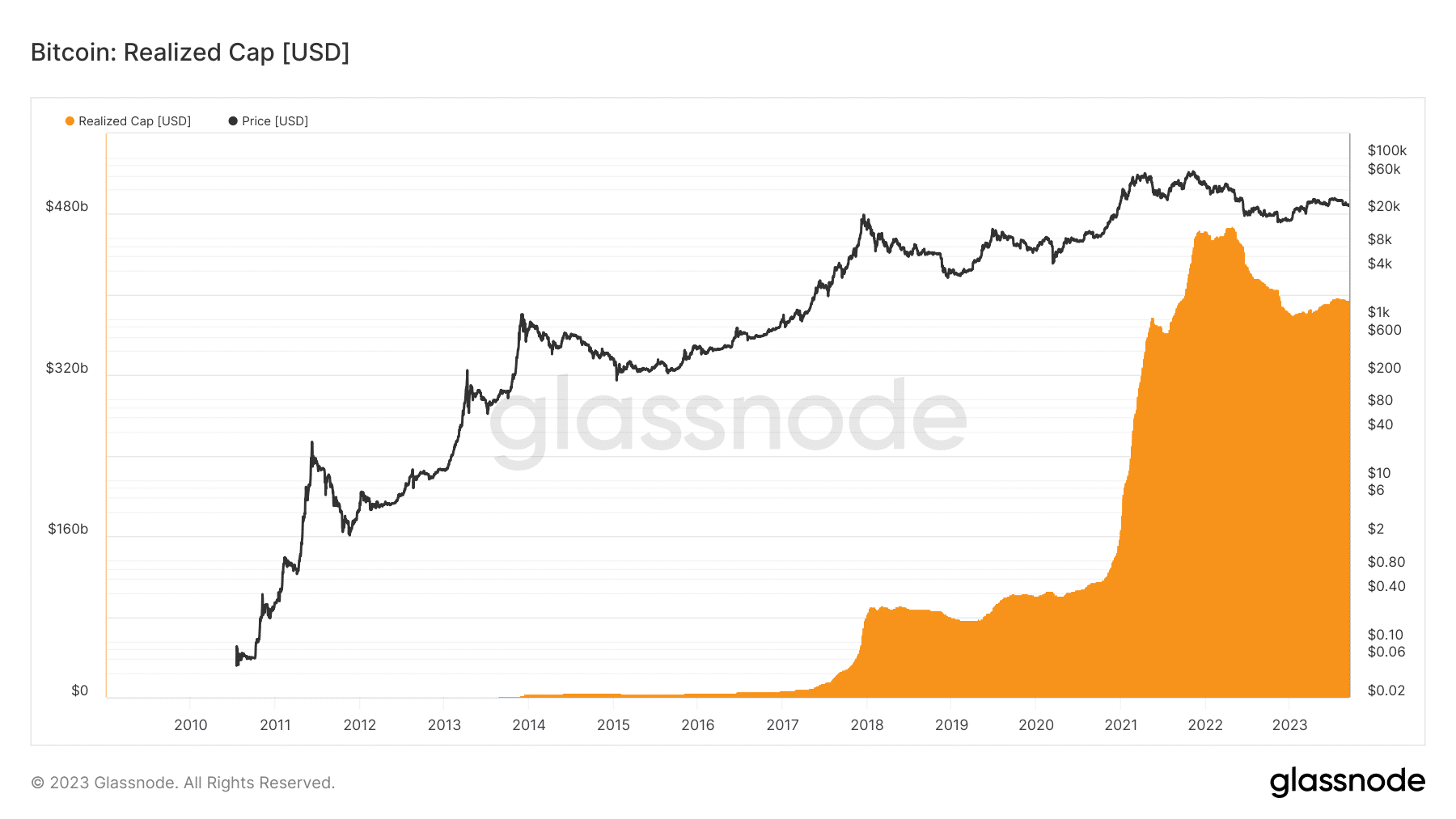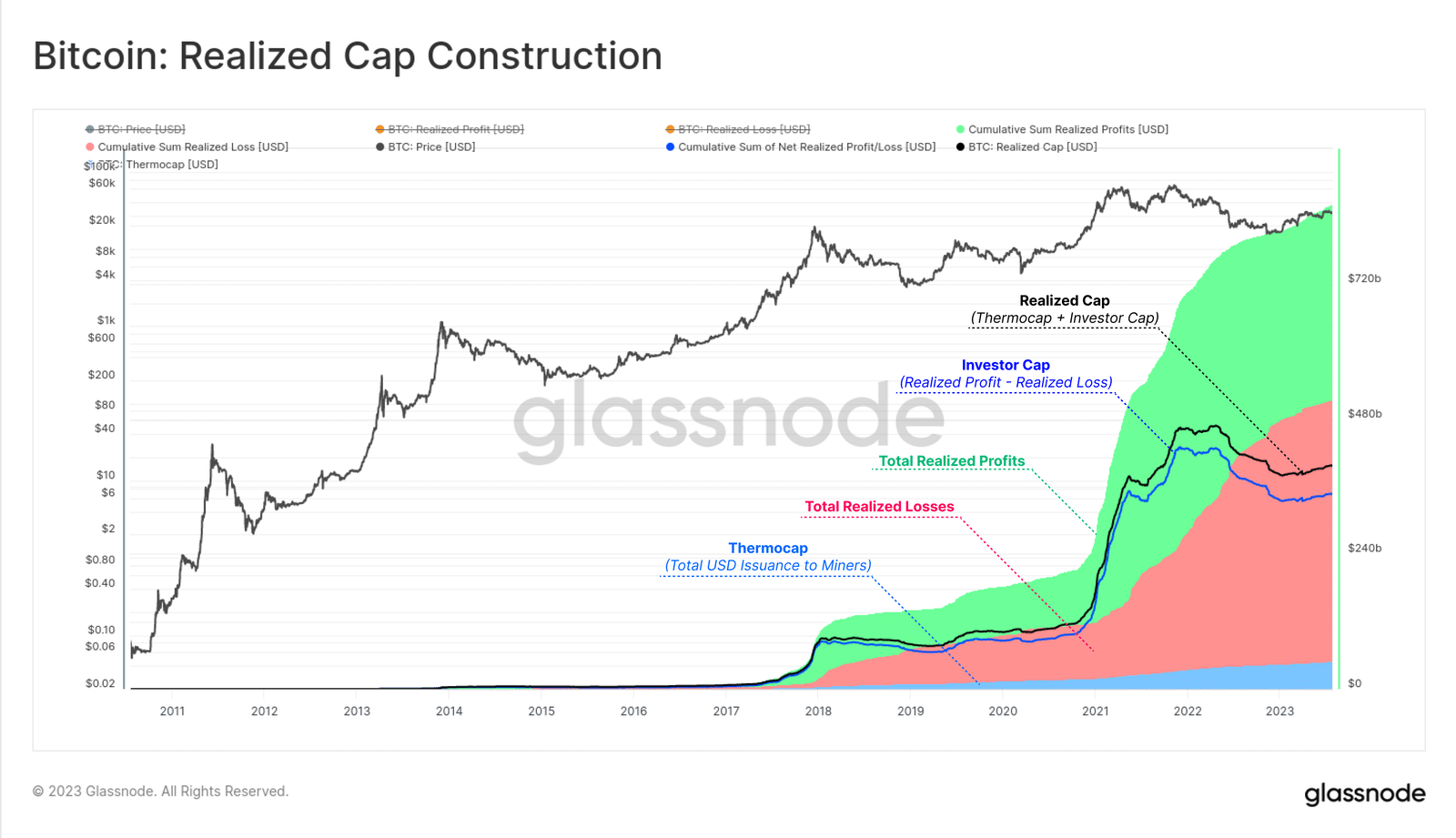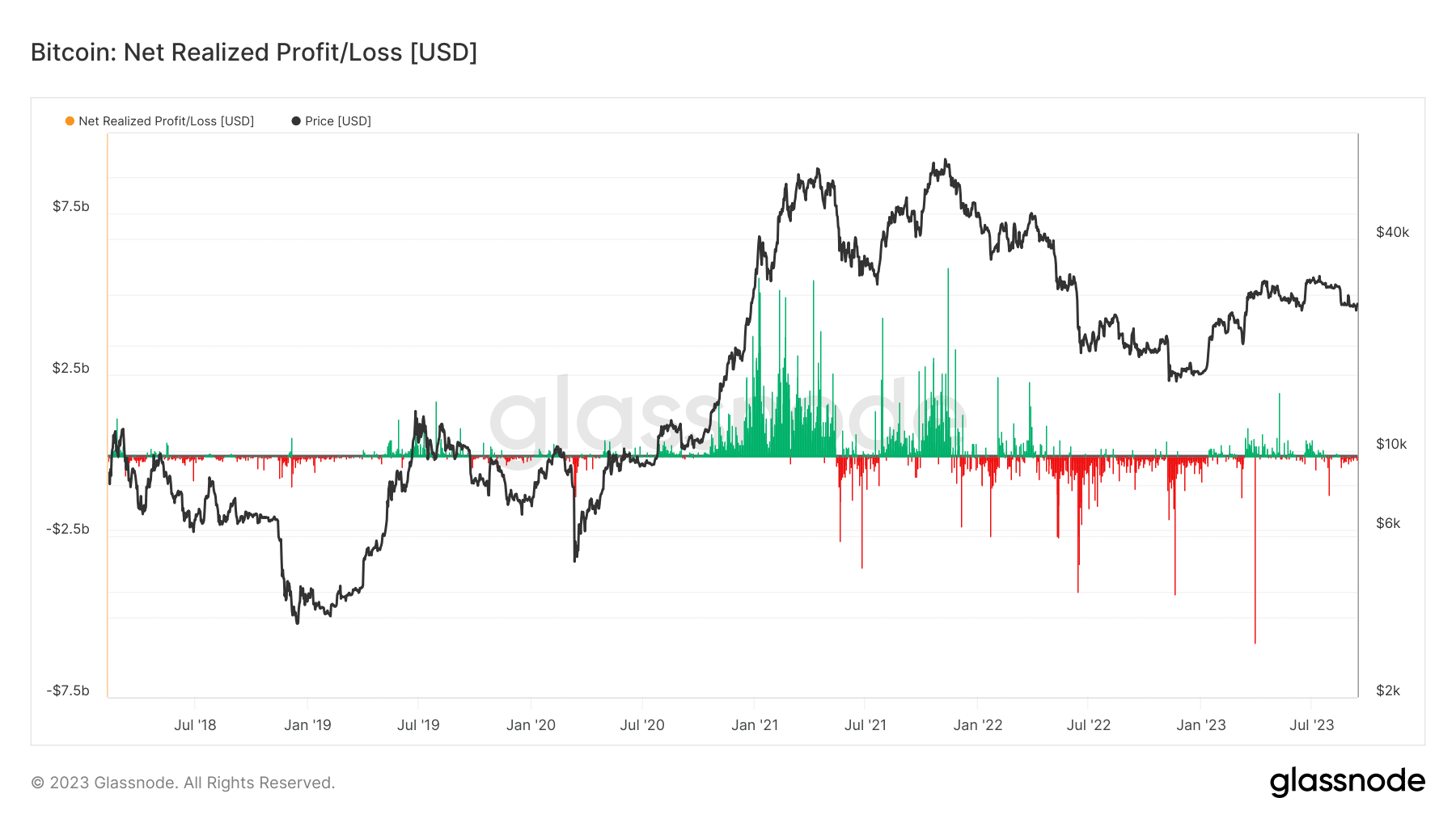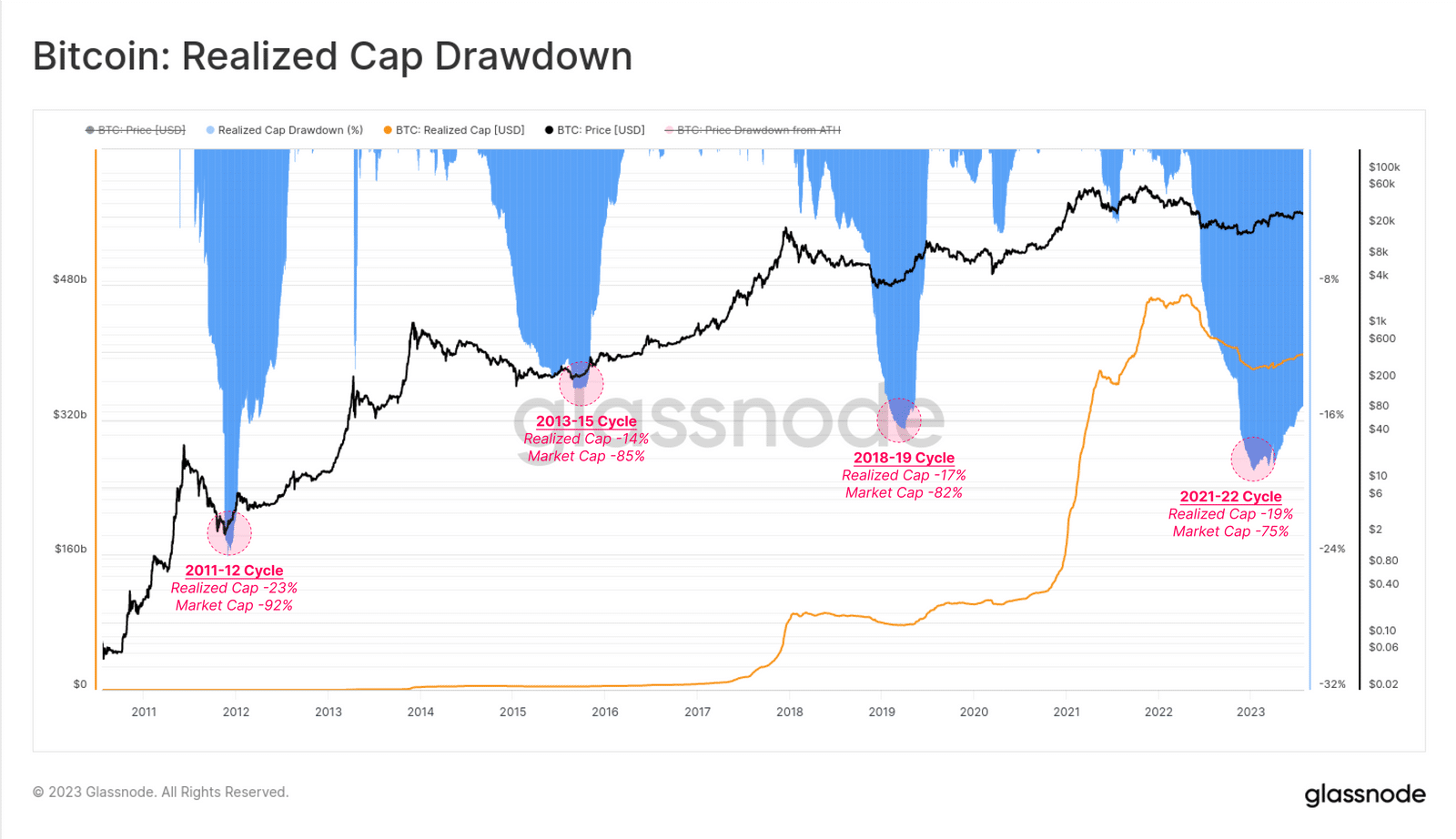- According to the on-chain analysis firm Glassnode, the ceiling values for an asset are determined based on the price at which each coin last moved.
- For Bitcoin, aside from realized profits and losses, the entry of new coins into circulation through mining has also contributed to the daily realized market value.
- Another notable aspect of Bitcoin’s realized capital is that it’s much lower than the drop in realized capital during price declines.
What does the current situation tell us about Bitcoin’s on-chain metrics? The lack of directional sentiment for Bitcoin could sustain sideways movement.
What Does the Current On-Chain Data Tell Us About Bitcoin?

Investor decisions are typically driven by a fundamental aspect such as profit and loss, independent of whether it’s in traditional finance or the crypto asset market. Greed for greater gains when markets rise and panic selling during bearish periods are natural reactions for market participants. Therefore, it’s not surprising that analysts and traders evaluate the market in terms of financial motivations.
The digital asset market takes an additional step in defining the economic value for an asset’s entry and exit, in this case, Bitcoin, through “Realized Capital,” which is based on the price of each coin at the moment it was last moved. For instance, when BTC is spent at a price higher than the last time it moved, realized capital increases, and vice versa. Thus, it fundamentally differs from the traditional market value based on the existing market value.
Logically, realized capital rises during strong bullish momentum. This occurs because long-term holders (LTH) tend to sell the assets they accumulated at discounted prices during bear markets at much higher prices.
The above result is also supported by on-chain data. Observe how the realized capital reached high peaks during the 2020-21 bull market.
Additionally, the liquidation of expensive coins during bear markets pulls down the realized capital. This is followed by a market consolidation phase, and funds start to move into the hands of experienced investors once again.
The graph above captures this behavior. Note how realized capital plummeted during the peak of the 2022 crypto winter. The subsequent recovery in 2023 represents a continued accumulation phase.
Diminished Emission Effect
For Bitcoin, the entry of new coins into circulation through mining has also contributed to the daily realized market value, alongside realized profits and losses.
However, the four-yearly halving effectively reduced the dominance of emissions. As indicated below, the newly minted supply, termed the thermocap, had much less significance compared to the components of realized profit and realized loss.
In fact, Glassnode stated that since 2016, emissions have accounted for a “maximum” of 10% of Bitcoin’s daily realized capital. Nevertheless, miner dynamics became a significant point of interest for analysts during low trading volume periods, which could be observed in real-time.
Holders in Loss
Like realized capital, the Net Realized Profit/Loss indicator is frequently used to determine market sensitivity, capital inflows or outflows, and trends in network profitability.
From the illustration below, it can be comfortably observed that most holders have realized losses since the bloody days of last month. This indicates that capital outflow and sensitivity are not negative.
Another notable aspect of Bitcoin’s realized capital is that it’s much lower than the drop in realized capital during price declines. To put it simply, if Bitcoin’s price drops by 75%, the decrease in realized capital would be three to four times smaller.
As shown above, realized market value tends to reverse around cyclical price declines. This is when most low-value coins have been accumulated by experienced investors and they are waiting to sell them in the next bull run.
Market Sensitivity Still Neutral
The bottom line of the analysis is that the Bitcoin market is currently in a consolidation phase, and the upcoming halving event next year could potentially usher in the anticipated bull market. According to the latest data from the Bitcoin Fear and Greed Index, the market was in a balanced state, and there were no extreme emotions driving the market.
In the last 24 hours, BTC made a jump to surpass the $26,000 mark and settled at $26,350 at the time of writing. According to Shivam Thakral, the CEO of the Indian crypto exchange BuyUcoin, the continuous flow of Bitcoin ETF applications, with the latest one from Franklin Templeton, seems to be helping sustain the market.




